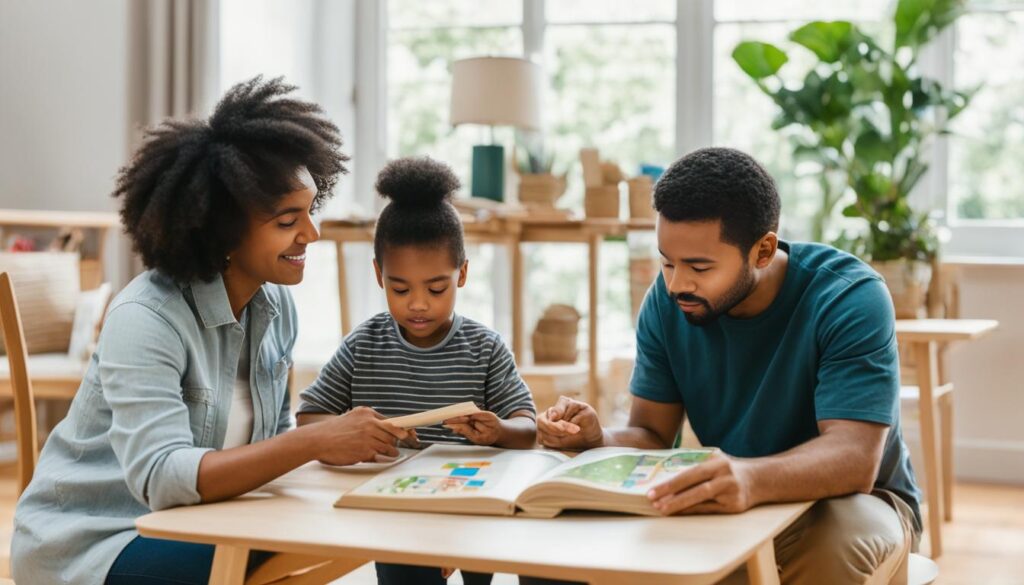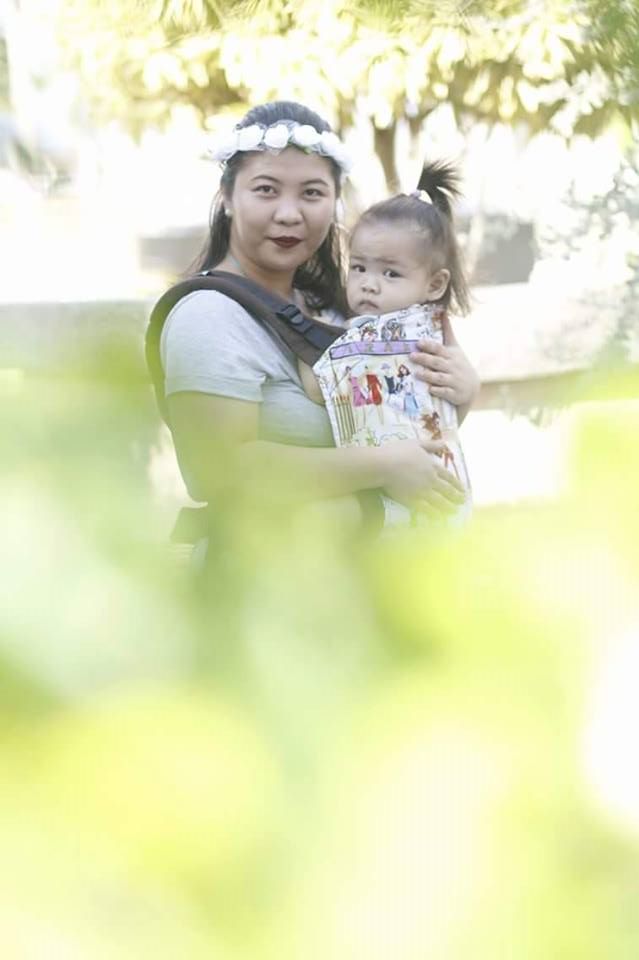My journey into the heart of parenting began with a simple, yet revolutionary desire for fostering connection and understanding within my family. The whisperings of gentle parenting strategies reached me amidst the cacophony of traditional parenting methods, promising a more harmonious family life. It wasn’t easy and I was pretty hesitant at first, but I realized that practicing gentle parenting was not merely a set of actions, but a transformation of my entire approach to nurturing my child. It beckoned as the path to not just educate but also to grow alongside my child in compassion and empathy.
It’s easy to follow the parenting blueprint handed down to us, but I sought a blueprint for the soul of my family. Here, I stand today, eager to share my insights on how to switch to gentle parenting, in the hope that others may find the depth and fulfillment it has brought to my home.
The Rise of Gentle Parenting: A Reflection on Compassionate Child-Rearing
Transitioning to gentle parenting may have left my parents, and some other people raise their eyebrows. However, I can’t help but observe the transformative nature of this journey. The very core of adopting the gentle parenting philosophy is to foster a relationship with my daughter that’s built on the bedrock of compassion and understanding. In my ongoing reflection on compassionate parenting, the stark differences between traditional authoritarian methods and gentle parenting become ever more evident.
In gentle parenting, the rigid structures give way to an adaptable framework, intuitively guiding my interactions. This approach beckons a call to introspection, pushing me to examine not just my actions, but also the intentions behind them. It’s a process that starts from within and extends to the little individuals I’m nurturing. In embracing this philosophy, I’ve learned that my children are not just empty vessels to be filled, but vibrant beings with their own thoughts, feelings, and identities.
Empowering a child means recognizing their inherent worth and offering both roots and wings.
It’s not simply a matter of following a different set of rules; adopting gentle parenting is a transformative act that aligns with our most basic instincts as nurturant caregivers. By engaging in this reflective practice, I’m able to connect with my children in a manner that honors their personhood and fosters genuine growth.
- The significance of patient guidance over authoritative demands
- Understanding the unique psyche of each child
- Forming a bond that thrives on empathy and mutual respect
What is Gentle Parenting?
Embarking on the journey of gentle parenting requires a pivot in outlook—a shifting of gears from traditional paradigms to a landscape of patience, responsiveness, and connection. At the core of my parenting identity lies the commitment to nurturing a bond with my child that is both resilient and tender, one that flourishes on the very principles of the gentle parenting philosophy.
Defining the Gentle Parenting Approach
Gentle parenting champions a collaborative partnership that honors my child as a person with their own thoughts, feelings, and contributions to our family narrative. It’s a step away from the authoritarian vista, towards a collaborative horizon designed around internal intentions and intrinsic motivations rather than external demands or artificial consequences.

In practice, this technique involves a variety of strategies that foreground the unique personality and developmental stage of my child, allowing me to attune my responses accordingly. The tenets of this philosophy make space for authentic emotional expression, advocating for a parenting style that prides empathy over control.
The Philosophy Behind Gentle Parenting: Empathy, Understanding, and Respect
The gentle parenting philosophy finds its roots in the fertile ground of empathy, watered with understanding and cultivated through mutual respect. Influenced by experts like Sarah Ockwell-Smith, I’ve realized the magnitude of practicing these principal elements within my own family.
The purity of this approach lies in its refusal to adopt punitive methods as a standard. Instead, gentle parenting techniques embrace the challenge of building open channels of communication that foster safety and growth. Here, guidance is the lighthouse, steering the ship with a compassionate compass, ensuring that the benefits of gentle parenting ripple out to touch every aspect of our lives.
Common Misunderstandings About Gentle Parenting
Gentle parenting tips abound, yet they often come with a slew of misconceptions, especially regarding boundaries and discipline. The images of unchecked behavior that some associate with gentle parenting betray the truth of a method built on respect, patience, and structured guidance.
The Myth of No Boundaries in Gentle Parenting
The mistaken belief about gentle parenting, viewing it as a boundary-free zone, greatly undervalues the strategic nature of this nurturing approach. Let me illuminate the reality: gentle parenting is not about lacking limits; it’s about setting them in a supportive, understanding way.
Discipline and Structure Within the Gentle Approach
Dispelling the myth further, discipline strategies in gentle parenting are designed through collaboration and mutual understanding, characterizing a very conscious approach to raising independent, thoughtful children.
| Misconception | Truth |
|---|---|
| Gentle parenting lacks discipline | Discipline is reframed as guidance rather than punishment |
| Children grown up undisciplined | Children learn self-discipline through modeled behaviors |
| It’s permissive parenting | Balances freedom with age-appropriate boundaries |
| No structure in home life | Structured routines are established co-operatively |
As I share these gentle parenting insights, I pledge to continue demystifying these common misunderstandings, championing a method that deeply respects children’s voices and fosters their holistic growth.
How Gentle Parenting and Montessori Fit Together
As someone who has devoted time to understanding the intricacies of child development, I’ve found that merging gentle parenting and Montessori is an extraordinarily cohesive fit. Both philosophies rest on the premise of nurturing independence and providing emotional guidance in child-rearing. This alignment naturally fosters an environment where children can grow and understand their emotions with supportive adult guidance, akin to a lighthouse guiding ships to shore.

Allow me to share a simple yet effective table that highlights the core similarities between gentle parenting and the Montessori approach that harmoniously promote a child’s self-development:
| Gentle Parenting Principles | Montessori Method Principles |
|---|---|
| Respect for the child as an individual | Viewing the child as an individual with distinct needs |
| Emotional connection as the foundation for behavior guidance | Emphasizing emotional development through exploration and discovery |
| Collaborative problem-solving and decision-making | Involving children in practical life activities to cultivate decision-making skills |
| Understanding the child’s developmental stage and unique pace | Customizing learning experiences to match the individual’s developmental rhythm |
As we observe this table, it becomes evident that the shared values of gentle parenting and Montessori create a scaffolding for nurturing independence. Whether it’s through respectful engagement or hands-on learning experiences, these methods encourage our children to become competent navigators of their personal and emotional journeys. My role as a guiding presence ensures the safe exploration of their burgeoning autonomy, solidifying these principles in both my heart and practice.
The 3 Facets of Gentle Parenting
The more that I read and learn about gentle parenting, the realization dawns on me that this methodology revolves around three core principles: empathy, understanding, and respect. Each facet is crucial in fostering a nurturing atmosphere that cultivates child development with the utmost respect. Let’s explore these transformative elements that guide parents on their journey to embrace gentle parenting.
Practicing Empathy as a Parent
Empathy forms the bedrock of gentle parenting. It’s about walking in the tiny shoes of my child, seeing the world through their eyes, and recognizing their feelings as valid. It’s a step beyond mere acknowledgment – it’s about truly being present and connecting with their emotions. But empathy isn’t just about understanding; it demands that I respond with sensitivity and care, modeling the emotional intelligence I wish to instill in my child.
Offering Understanding to Nurture Development
Understanding in gentle parenting stretches beyond mere comprehension; it involves recognizing the developmental stages of my child and tailoring my approach to meet their evolving needs. It’s about nurturing age-appropriate responses and providing guidance that aligns with their view of the world. This allows me to cultivate a space where my child feels heard and supported, smoothing the path for their emotional and intellectual growth.
Fostering Mutual Respect Between Parent and Child
Respect is a two-way street, especially in the dynamic between parent and child. By embodying respect in my daily interactions, I teach my child by example. It’s crucial they observe and experience this respect firsthand; it sets the standard for their own behaviors and interactions with others. Gentleness in discipline and steadfast respect for their feelings and thoughts pave the way for a harmonious parent-child relationship built on mutual reverence.
Through the consistent practice of these three principles, I am taking meaningful steps to embrace gentle parenting, fostering empathy in my home, and nurturing child development with respect. It’s a transformative experience that reshapes not just the relationship with my child but also fundamentally changes how I perceive parenting itself.
<!– Example of a table that could be used in another section where relevant data is to be compared or presented:
| Gentle Parenting Practice | Benefits for Child Development |
|---|---|
| Emotional Validation | Leads to strong emotional intelligence and resilience |
| Consistent Support | Promotes secure attachment and trust |
| Modeling Respect | Teaches interpersonal skills and self-respect |
–>
How to Switch to Gentle Parenting
Many of my readers have asked, how did you do it, and was the transition hard? Some of you may even think that this is more difficult when the children are older. However, I recognize that it isn’t just about revising disciplines; it’s about soulfully transitioning to gentle parenting. It requires an inner transformation, a heart-led redirection from reactive to responsive interactions with my children.
My initial steps began with understanding that every engagement I share with my child is a building block towards a more harmonious relationship. Introducing gentle parenting strategies for everyday life doesn’t happen overnight but is a conscious series of decisions.
Adopting Gentle Parenting Techniques in Daily Life
Finding tranquility in the daily chaos is my key for unveiling the calmness that gentle parenting promises. I draw on breathwork to guide me and my child through emotional upheavals, ensuring that our home remains a refuge of serenity instead of stress. Replacing my haste with patience enables me to address her needs without exacerbating tensions and provides a model for them to emulate.
Steps to Embrace Gentle Parenting for Lasting Change
- Commend actions, not character – Feedback becomes a nurturing tool rather than a scolding weapon.
- Engage in cooperative problem-solving – Challenges transform into opportunities for teamwork and growth.
- Model self-regulation – Demonstrating calm self-control teaches by example and fosters a peaceful environment.
- Utilize positive reinforcement – Celebrating my child’s successes instills confidence and motivates kind behavior.
These methods are my beacon as I navigate this new terrain, where my actions and words sow seeds of empathy and compassion in family life. The path is evolving; each day is a testament to the enduring change brought forth by embracing the gentle parenting ethos.
Conclusion
In my own journey, I’ve discovered the immense benefits of gentle parenting, which have significantly transformed the way I connect with my children. The core principles of respect, empathy, and understanding that underscore this approach have allowed us to forge a stronger relationship, one rich with trust and mutual regard. By embracing a gentler parenting approach, I’ve not only seen positive changes in my children’s behavior but also in their emotional acuity, a testament to the nurturing power of gentle parenting.
My venture into gentle parenting was marked by trial, reflection, and growth. Applying gentle parenting tips such as active listening, patient guidance, and co-regulation of emotions, I’ve not only guided my children but also evolved myself. It’s through the daily, mindful application of these techniques that my family has cultivated a harmonious life together, brimming with understanding and cooperation.
As parents, it’s our privilege to explore pathways that elevate our familial bonds and foster environments where our children can thrive. I am a living example that taking steps to weave gentle parenting practices into our daily lives leads to a deeply rewarding transformation. It is in this light that I share my story, hoping to inspire others to join me in embracing a gentler parenting approach for a future where our children grow in an atmosphere of unconditional love and unwavering support.
FAQ
What are the core principles of gentle parenting?
The core principles of gentle parenting are based on empathy, understanding, and respect. This approach emphasizes the importance of treating the child as a full individual and nurturing a responsive, connected relationship that fosters emotional intelligence and mutual respect.
How do I make the transition to gentle parenting?
Transitioning to gentle parenting starts with self-reflection and a commitment to change. It involves learning new techniques that help foster connection and understanding, and practicing compassionate communication, consistency, and patience. Embracing this approach means moving away from punitive methods and towards cooperative problem-solving and positive reinforcement.
Can gentle parenting effectively discipline children?
Absolutely. Gentle parenting is not about the absence of discipline; it’s about reframing how we view and apply it. Instead of relying on punitive measures, this method uses compassionate communication to set clear and kind boundaries, which can effectively guide children towards safe and responsible behavior.
How does gentle parenting align with Montessori principles?
Gentle parenting and Montessori share common ground in encouraging children’s self-responsibility and independent emotional development. Both view the adult as a guide, rather than an authoritarian figure, and prioritize understanding each child’s unique responses to life’s challenges within a supportive environment.
What are the first steps to take towards practicing gentle parenting?
The first steps include becoming more mindful of your own responses to stress, actively listening to your child, and learning to communicate with empathy. Adopting techniques that promote emotional regulation, such as breathwork and proactive planning for transitions, also supports the gentle parenting approach.
How does gentle parenting benefit the family dynamic?
Gentle parenting creates a more harmonious family life by fostering connection and understanding between parents and children. It cultivates a home environment characterized by trust, emotional safety, and mutual respect. It encourages children to be self-aware, confident, and emotionally intelligent, while also guiding parents towards more mindful and empathetic interactions.
How can I model respect through gentle parenting?
You can model respect by actively listening to your child, acknowledging their feelings, and providing them with the same level of respect you would expect yourself. This includes validating their emotions, offering empathy, and treating them as valued members of the family whose opinions and contributions matter.
What does a gentle parenting approach look like on a daily basis?
On a daily basis, gentle parenting involves responding to your children with empathy and patience, considering their perspectives, and guiding them through challenges with kindness. It means choosing respectful and empowering language, setting consistent yet flexible boundaries, and collaboratively solving problems with your child.
How can I maintain consistency in my gentle parenting approach?
Maintaining consistency in gentle parenting requires clear communication about expectations and boundaries. It’s about being steadfast in your compassionate approach, even when it’s challenging. This might mean having regular family meetings to discuss issues, using calm-down strategies together, and taking time for self-reflection to ensure your actions align with gentle parenting values.
What if I encounter resistance from my child when I switch to gentle parenting?
Resistance is a natural part of any change process. If your child resists the transition to gentle parenting, remain consistent and patient. Offer them understanding and empathy as they adjust to the new dynamics. Reassure them of your love and commitment, and stay the course with your gentle approach, setting a positive example for them.

Aine Austria is a content creator, freelancer, entrepreneur, essential oils educator, nacho lover, and mom to an adorable daughter. She helps aspiring mom bloggers and entrepreneurs launch their blog, alongside other money-making opportunities. Aine believes that everyone has a story to tell and that their experiences and talents can be shared with the world.
Aine’s passion for writing and sharing her knowledge with others started at a young age. Growing up, she always loved to read books, write stories, and express herself through words. She strongly believes that moms can still pursue their dreams and passions while raising a family, and she aims to inspire other moms to do the same through her work.
Leave a Reply